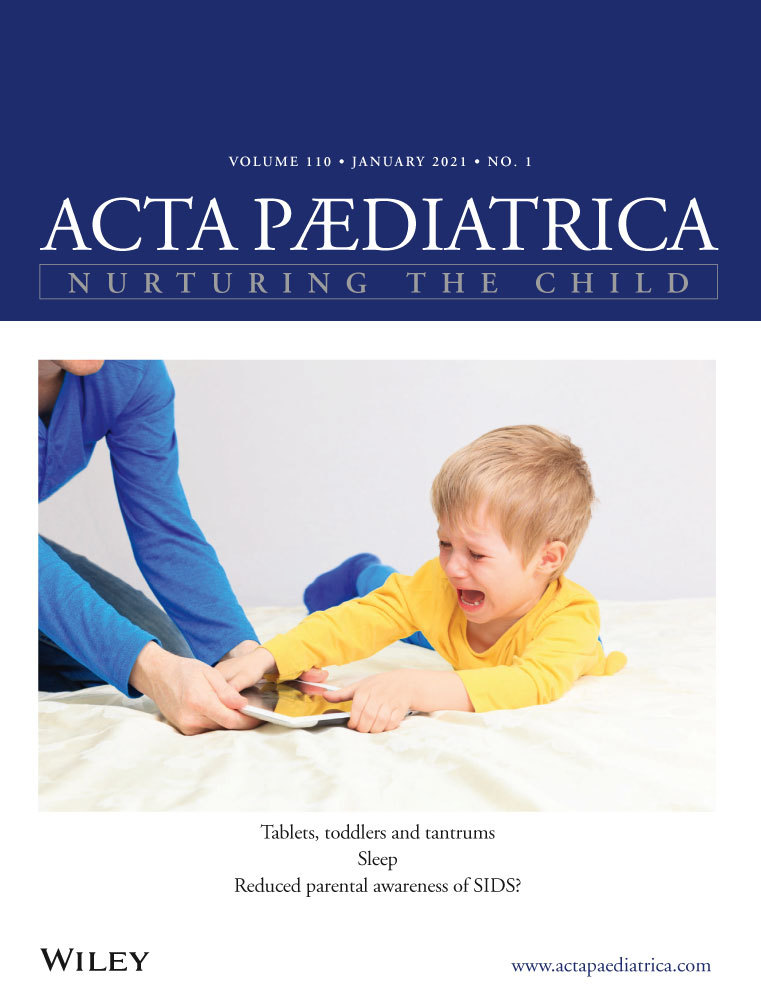Structured Observation of Motor Performance in Infants: Level and quality associated with later motor development
[Corrections made on 11 September 2020, after first online publication: The expanded form of "NSMDA" has been changed in this version.]
Funding information
This study was funded by Uppsala University Hospital, the Folke Bernadotte Foundation and the Linnea and Josef Carlsson foundation.
Abstract
Aim
The aim of this study was to investigate the level of motor development and the quality of motor performance during the first 10 months in relation to the Bayley Scales of Infant Development—third edition (Bayley-III) motor index at 2.5 years.
Methods
Children born very preterm from a population-based study (n = 113) were assessed with the Structured Observation of Motor Performance in Infants (SOMP-I) at 2, 4, 6 and 10 months corrected age and the Bayley-III motor index at 2.5 years corrected age (n = 98). Logistic regressions were performed to investigate the independent association of each SOMP-I domain to Bayley-III motor index.
Results
There were significant associations between the SOMP-I-scores and Bayley-III motor index per every assessment age. At 4 months, both level and quality were independently associated with a later motor outcome, OR for level was 1.26 (95% CI = 1.08-1.50, P = .002) and for quality, 0.75 (95% CI = 0.63-0.90, P = .002). Quality was independently associated with the Bayley-III motor index at 6 and 10 months: OR 0.080 (95% CI = 0.67-0.95 P = .010) and 0.79 (95% CI = 0.64-0.97, P = .026).
Conclusion
Both SOMP-I domains, level and quality, are markers to identify motor problems early. Quality became more important with age.
CONFLICT OF INTEREST
Kristina Persson is the developer of the SOMP-I and an associate of Barnens rörelsebyrå-economic association, which owns the rights to SOMP-I. The other authors have nothing to disclose.




